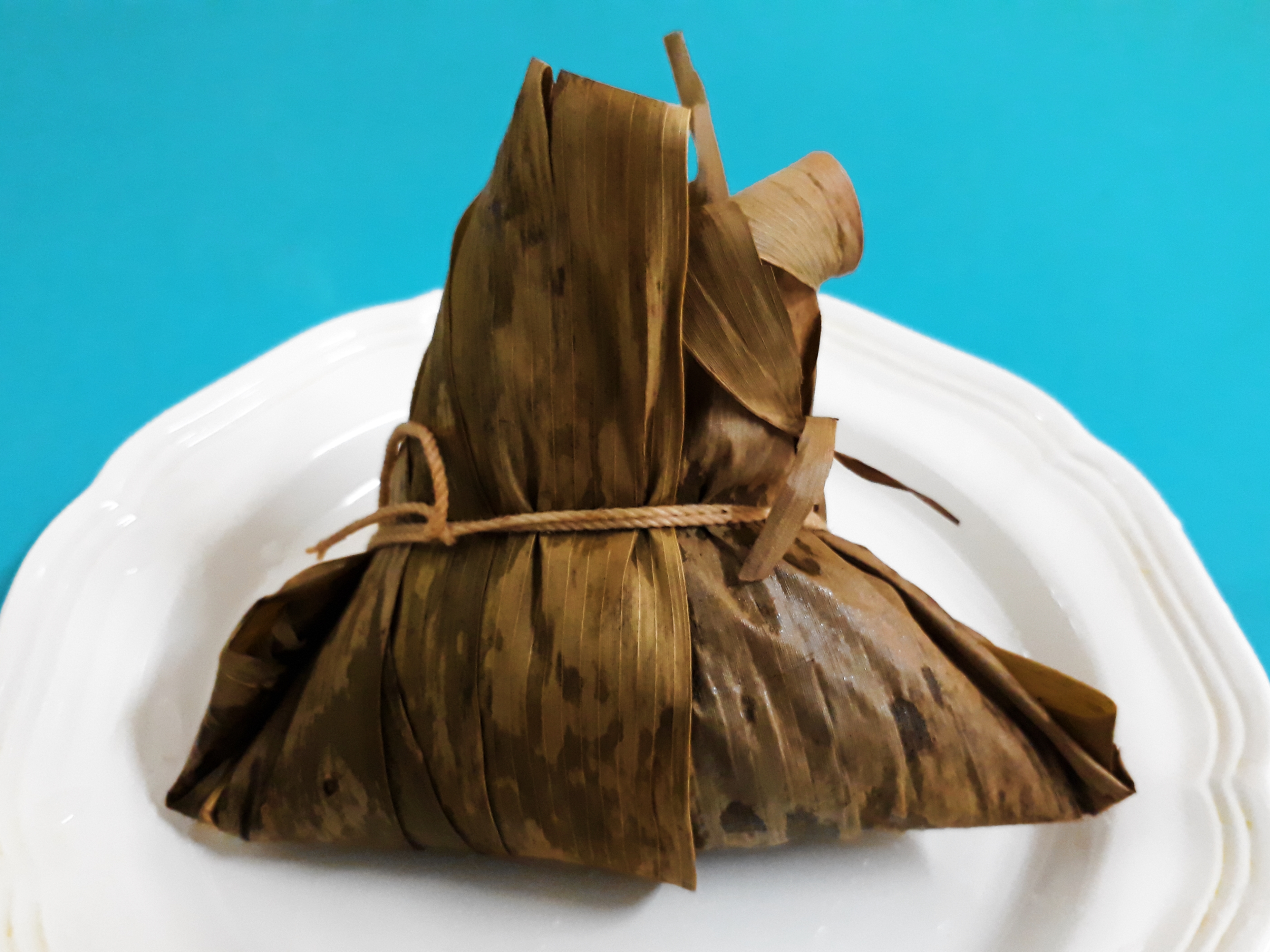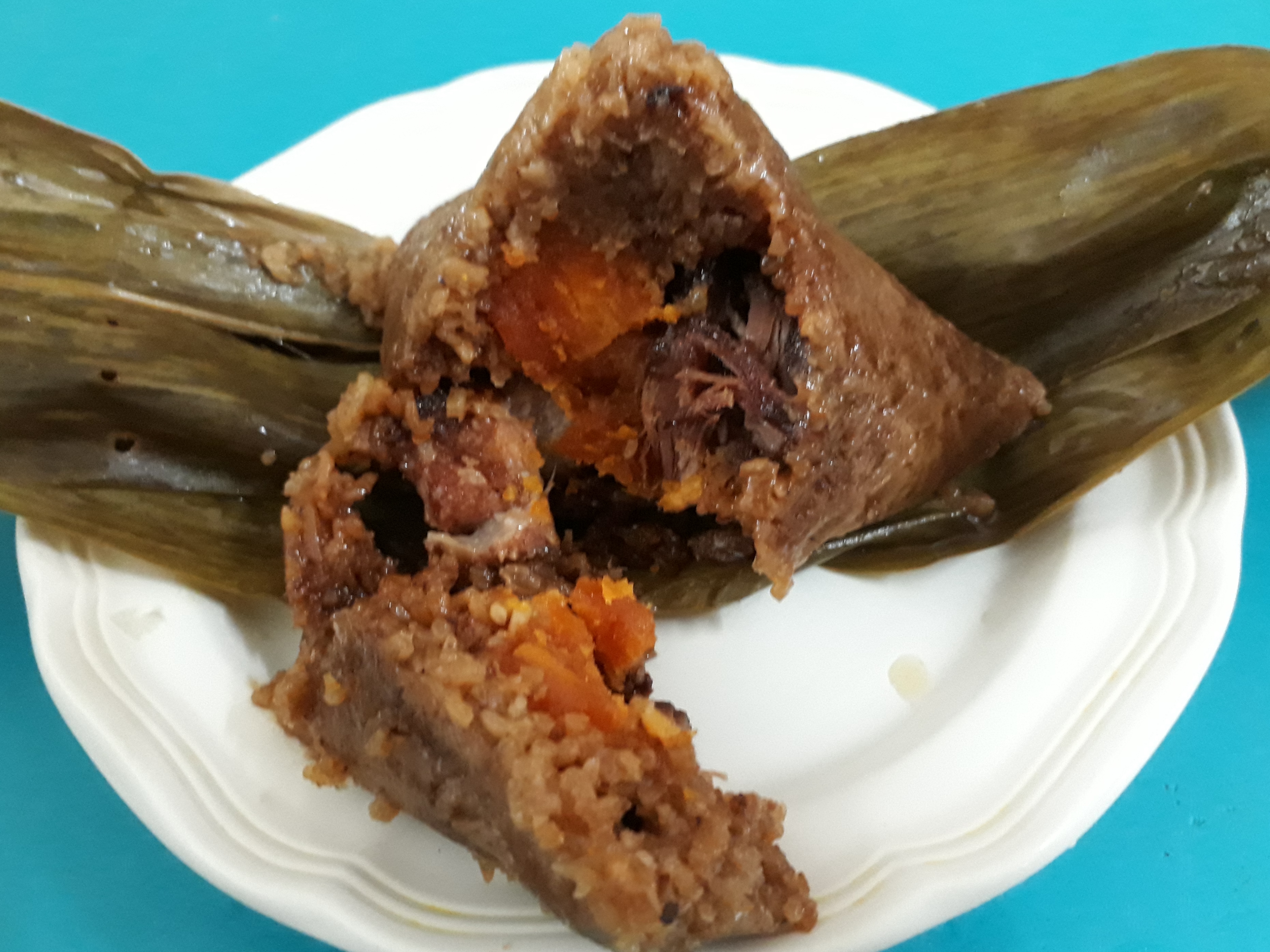Zongzi (Chinese: 粽子) is a Chinese glutinous rice dumpling containing different types of filling and wrapped in fragrant bamboo leaves. In Singapore and Malaysia, it goes by the Hokkien-influenced moniker bakchang. In Hong Kong, it’s known as zong (pronounced “ch-oe-hng”).
The “bakchang” is also part of the Dragon Boat Festival (Duanwu Festival/端午节 or, as it’s known in Hong Kong: Tuen Ng/端午節) tradition to pay homage to the Zhou Dynasty minister and poet, Qu Yuan (c. 340–278 BCE), who drowned himself in the Miluo River (current-day Hubei province) in protest of his innocence when he was accused of being a traitor by his state’s conniving Prime Minister. According to legend, the villagers, who admired Qu Yuan’s reputation for righteousness and patriotism, made rice dumplings to throw into the river as an offering to the soul of the departed minister-poet, and also to lure the fishes away from his body. That was the origin of the Dragon Boat Festival, which the Chinese still observe to this day, with dragon boat races and offerings of rice dumplings to the gods, as well as distribution to relatives and friends.
My fave type of “bakchang” is the Hokkien version, where the glutinous rice is tinted dark-brown from the use of dark soysauce, and flavoured with Chinese 5-spice. The filling usually consists of fatty pork belly, salted duck’s egg yolk, chestnuts, dried shrimps, and shitake mushroom. There will be variations where, in addition to the ingredients described earlier, you also get mashed mung beans (Cantonese-influenced), mashed yam (in Thailand, with Taechiu/Chiuchow/Chaozhou influence) and candied wintermelon (the sweet-savoury “Nyonya bakchang” from Malacca). There are also luxury versions, popularised by upmarket restaurants and hotel-based F&B outlets in recent years, with the addition of pieces of roast duck or even abalone - but these are not traditional.
- The best bakchang I’d ever tasted in Malaysia is undoubtedly from Guan Kee in Ipoh, Perak state - 2 hours’ drive north from Kuala Lumpur, or 2 hour’s drive south if you start your journey from Penang. Guan Kee’s version contained braised pork belly, dried shrimps, salted duck’s eggyolk, chestnut, and shitake mushroom (the sort with a flat rim, and not too spongey in texture). The glutinous rice here is not too tightly packed, and has a loose wonderful texture, only just holding together. The flavourings are pretty subtle - soysauce, oyster sauce, 5-spice, Shaoxing wine.
Guan Kee’s bakchang:



- The best bakchang I had in Penang is from an itinerant stall along Solok Moulmein in Pulau Tikus. The hawker sells his wares from 12 noon till everything runs out, usually by tea-time, 4 times a week: Tue, Wed, Fri & Sat.
- The best bakchang I’d ever tasted in Singapore is from Hoo Kee at Amoy Street Food Centre.
P.S. - I’ve tried “bakchang”/zongzi in Hong Kong, Taipei, Kaohsiung, Shanghai and Beijing, but didn’t like any of those - the search goes on. I had a good one in Bangkok at a restaurant in Chaeng Wattana, but didn’t get the address - will need to go back and hunt for it again.
Address details
In Ipoh:
Guan Kee
Restoran Ipoh Central
51-53 Jalan Raja Ekram
30250 Ipoh, Perak, Malaysia
Tel: +6019 5571107
In Penang:
Tong Sui & Bakchang stall
Solok Moulmein (in alleyway behind Swee Kong Cafe)
Pulau Tikus,10450 Penang, Malaysia
In Singapore:
Hoo Kee Rice Dumpling
Amoy Street Food Centre #01-18
7 Maxwell Road, Singapore 069111
Tel: +65 62211155















